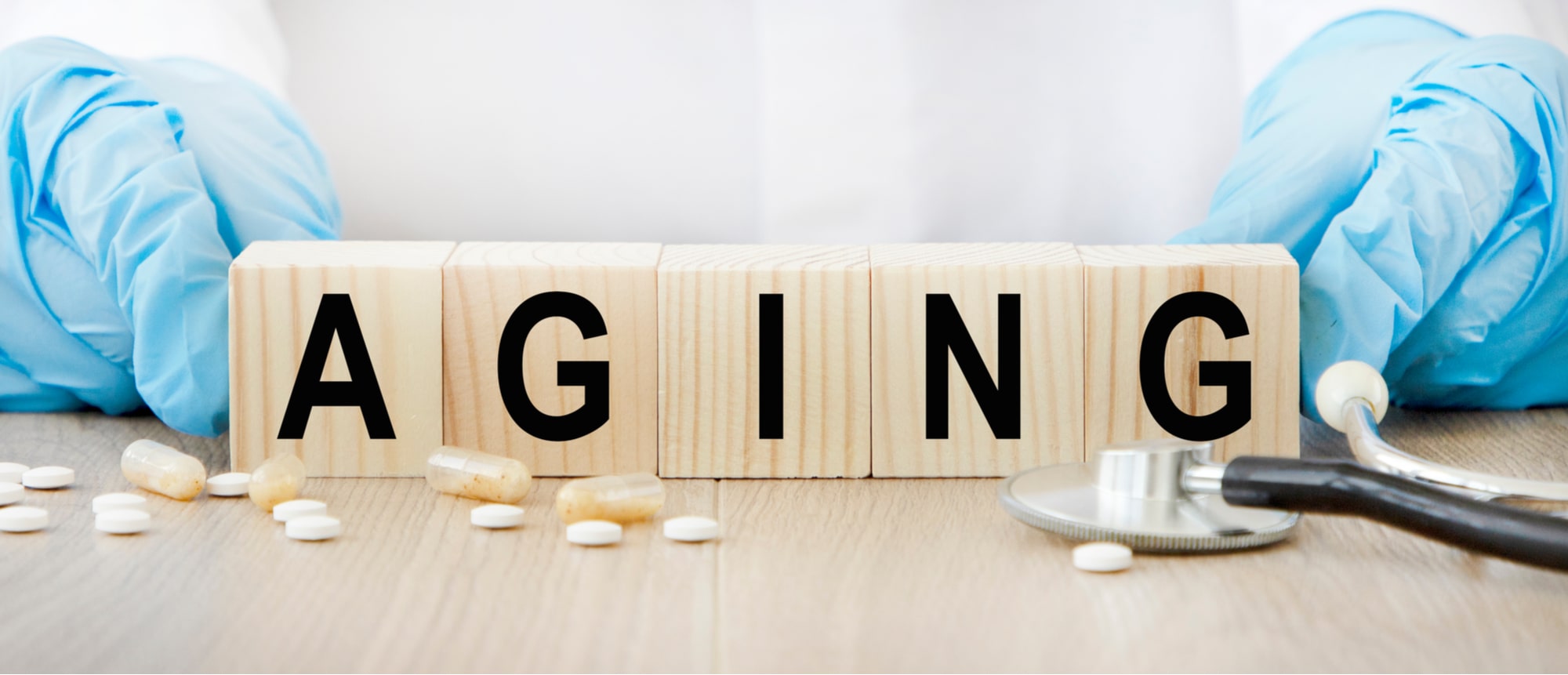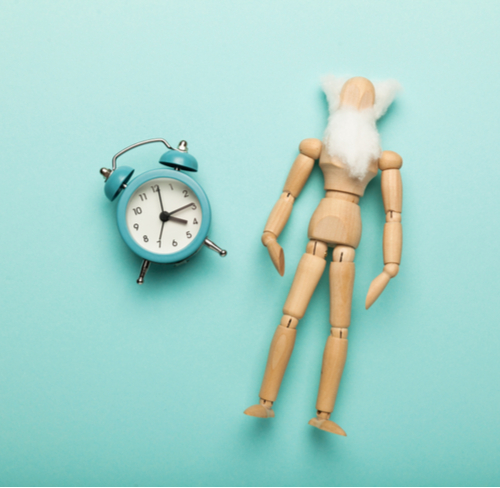At the Dusk of Life: Signs of Body Ageing
Many of us were saying that age is just a number at least once in our lifetime. Still, the bigger our age number becomes, the more often we think about how much this number will grow yet. We also wonder how long our feeling of being young will correlate not only with our appearance but also with physical abilities. Or, putting it more simply, when we start to be old? And if being old is not about age, what does being old mean?

In its recent classification, the World Health Organization has prolonged the young age up to 45 years. People between 45 and 60 years of age are considered as middle-aged, those aged 60-75 years are senior citizens, and people over 75 are considered elderly. But as most approximations, this classification has nothing to say about each individual person. All of us know at least one young ‘old man’ who starts to complain about life at 30 and dreams about retirement at 50 as well at least one vibrant personality aged over 80 who is more active than friends of his or her children.
So what influences aging? When does it start? How can we define a moment when the movement of life begins to droop, and what can we do about it? And, finally, is the science capable of telling us how long we would live?
How to Measure Aging?
For many centuries, scientists have searched for the markers of biological aging, which could tell us more precisely the state of our body and predict when this body starts to age. Different cultures at different times had various standards for defining people as old, such as losing fertility, critical deterioration of senses, grey hair, and others.
Today, there are three accepted criteria for markers of aging suggested by the American Federation for Ageing Research in the report, titled “Biological Age Predictors”. These criteria include the ease of measurement (provided that the process of measurement should not accelerate the aging itself), the ability of the marker to access the risk of death, the relation to the biological aging processes, and ability to use the marker for humans as well as for animals. These criteria are pretty tough, and there are only three markers that could meet all of them during the last 16 years after the criteria were accepted. We will describe them in more detail below.
The First Marker: Frailty Index
The frailty index is based on the list of symptoms that can be frequently seen in humans or animals and which can have a very negative health impact. The most recent list of symptoms, titled “A Frailty Index for UK Biobank Participants” was published in the year 2018 and is available to anyone interested in checking one’s health. It is enough just to add one point for each present symptom and evaluate the final result, which could help to predict the need in regular care or even chances of death from aging.
However, this method works only for aged adults. Younger people just haven’t lived long enough to develop enough chronic and dangerous illnesses, and therefore their result would not be valid.
In the year 2015, the researchers from the National Academy of Science of the USA have offered their list of markers, titled “Quantification of biological aging in young adults“ not directly related to chronic or dangerous diseases. This list includes, among others, the level of cholesterol, the body mass index, the Hb level, the condition of the mucous membrane, and other signs which can be examined at any age. The result of the test allows evaluating the body age, which often doesn’t match the actual age. Thus, the body age of those research participants, who were aged 38 years, was varying from 30 to 50 years.
The Second Marker: the Length of Telomeres
The telomeres are the ends of DNA that shrink each time a cell divides. When the length of telomeres becomes critically small, the cell loses its ability to divide, and the aging starts to occur. On average, the length of telomeres allows 50 cell divisions, and for a long time, this parameter was considered as decisive in determining the lifespan of our bodies.
But later studies have challenged this idea. First of all, it has turned out that the length of telomeres can vary significantly depending on many factors. Thus, on average, the telomeres of women are longer than those of men, as evidenced by the research, titled “Reflections on telomere dynamics and aging-related diseases in humans”. Meanwhile, the telomeres of children of older fathers are longer than those of children whose father was young at the moment of conception, as shown in another study “Older paternal ages and grandpaternal ages at conception predict longer telomeres in human descendants“. Finally, in some countries, people have different lengths of telomeres in dry and rainy seasons, as can be seen from the report “The telomere lengthening conundrum – it could be biology”.
Moreover, there are cases when telomeres have increased in length in people after 75 years of age, as evidenced by a research “Human telomere biology: A contributory and interactive factor in aging, disease risks, and protection” or in those who spend a year on orbit as can be seen from the paper “The NASA Twins Study: A multidimensional analysis of a year-long human spaceflight”.
On the whole, despite seeming simplicity and plausibility of this criterion, it looks like it cannot be relied upon entirely. Apparently, in most cases, the length of telomeres correlates with the life span, but the science is not yet certain about it.
The Third Marker: Methylation Clocks
As we grow older, we change together with our DNA: the longer we live, the more densely DNA threads are recoiled inside the cell nucleus. During the process, some parts are contracted, and information recorded with them becomes non-accessible while others open up, providing previously unavailable data. This curtailing is affected by the so-called methyl groups, and the more numerous they are, the more intense the process is.
In the year 2013, in his research, titled “DNA methylation age of human tissues and cell types”, the American scientist, Steve Horvath, has offered the so-called methylation clocks consisting of 353 parts of DNA some of which obtain a methyl group during the lifetime while others lose it. These clocks are made on the basis of the study “DNA methylation-based measures of biological age: meta-analysis predicting time to death“ and are based on allocating those parts of the DNA, which are subjected to methylation and are capable of telling us the life span of the human being as well as even the life span of individual cells. Yet, one problem remains as we still don’t know why some parts of DNA have a key role for aging and, most importantly, how we can influence them.
Is the Dusk Coming Down?

Leaving the science aside, each of us knows pretty well what aging means as our bodies lose their physical functions and ability to withstand illnesses. There are certain signs which can help us to understand when it is time to pay more attention to our health. Here are some of them.
Your hands become weak
The strength of your handshake and even the ability to open a jar of preserves can be a sign of your body age. The research published in The Lancet magazine, titled “Prognostic value of grip strength: findings from the Prospective Urban Rural Epidemiology“ has confirmed that people with weaker handshake have 16% higher risk of death from various reasons. It all depends on the muscle mass, which is actively lost with age, and if we don’t withstand this process, we start aging earlier and more rapidly. But there is good news: those participants of the research who were developing their grip strength were living longer as a result.
You get more fat around your waist
All of us gain weight as we get older, but if it concentrates around our waist as it goes with the men, we are in trouble. The research made in the year 2019 has supported the thesis that those women who had extra weight on their bellies were twice more prone to dangerous heart diseases than women who accumulate fat around their thighs.
You are a slow walker
The way we walk is directly related not only to physical but also to mental health. This was concluded by the authors of research in New Zealand “Association of Neurocognitive and Physical Function With Gait Speed in Midlife“ participated by 900 volunteers. The results of the study have shown that those participants of the research whose gait speed was lower than average had worse physical health, their body age estimate was higher, and the scope of their hippocampus (the part of the brain, responsible for memory and cognitive abilities) was smaller than those of faster participants of the experiment.
Meanwhile, the research “Self-rated walking pace and all-cause, cardiovascular disease and cancer mortality: individual participant pooled analysis of 50 225 walkers from 11 population British cohorts” conducted in the year 2018 and published in British Journal of Medicine has demonstrated that with speed around 6 km/hour have lowered the risk of death from all causes for 20% (and even more for patients aged over 60).
You Have Frequent Bone Fractures
Fragile bones are another sign of getting older. After 40 years of age, we begin to lose calcium, and each year this becomes more intense. Moreover, each year our cells are less capable of storing vitamin D, which is essential for our bones, and as a result, we are more likely to get injuries and fractures.
Our Face Proportions Change
There is another substance that we have less as we get older, and this is collagen, which creates a protective network for the cells for our skin. The less collagen we have, the faster our skin deteriorates, and the sooner our face shape changes (first of all, the lines of our cheeks). Besides, our jawline changes with age as well (due to wear of cartilages and teeth loss or changes), which also impacts our face proportions.
So Is Age Not Just a Number?
Whatever is the date of birth in your ID and the number of candles on your birthday cake, all of these have very little effect on the state of your health, expected lifespan, and even your actual age. According to statistics, most of us are most likely to live up to 75 years and get one or more chronic diseases when we reach 65 years of age. Meanwhile, we are not just statistics. Indeed, our actions and habits (first of all, our life-changing habits as well as eating and health-care habits) determine how young we will feel every year, and, finally, how long we will live.
Learn more about LONGEVITY
What to learn more? Read here:





